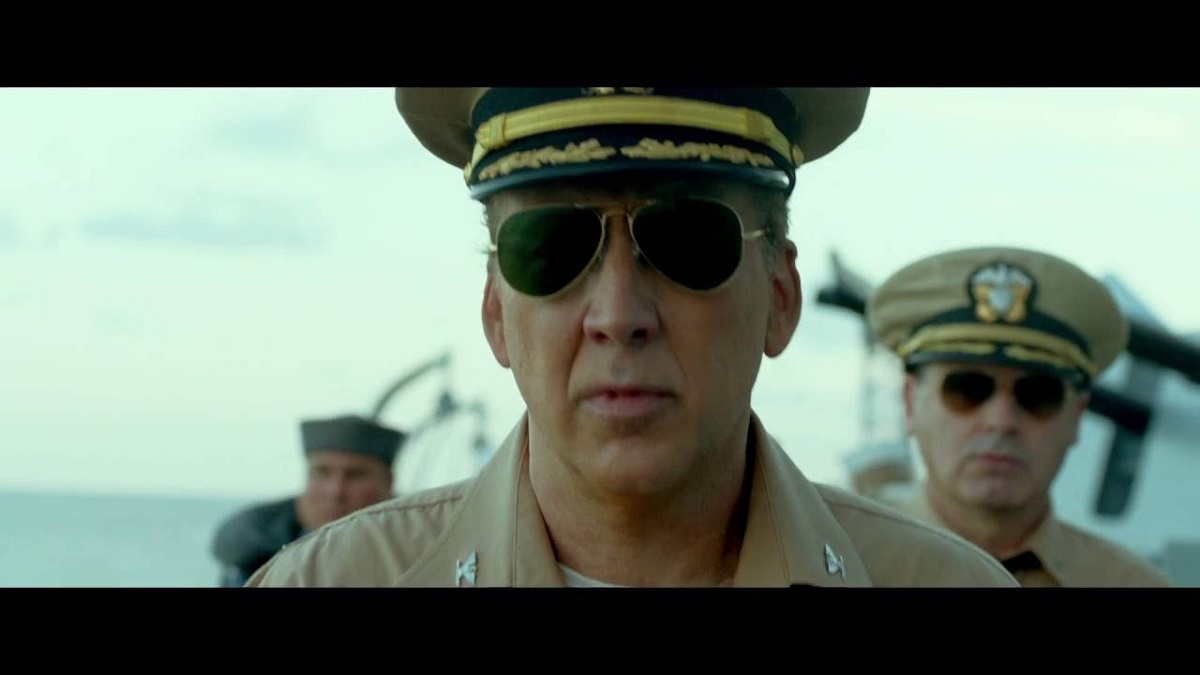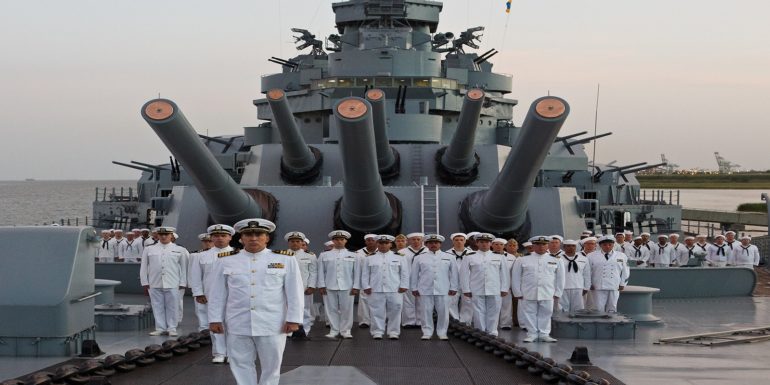Academy Award winner Nicolas Cage (Leaving Las Vegas, The Rock) stars in USS Indianapolis: Men of Courage, the wartime action drama directed by Mario Van Peebles. After delivering one of the atomic bombs that would eventually end World War II, the Navy cruiser USS Indianapolis is torpedoed by a Japanese submarine. Left with no option but to abandon ship, Captain Charles McWay (Cage) and hundreds of his crew are left stranded in shark-infested waters.
USS Indianapolis also stars Golden Globe nominees Tom Sizemore (Saving Private Ryan) and Thomas Jane (Deep Blue Sea) and is directed by Mario Van Peebles (New Jack City).

To celebrate the upcoming release of USS Indianapolis: Men of Courage we have been supplied with 15 fascinating facts about the true story the film is based on.
- The enriched uranium that the USS Indianapolis was carrying the atomic bomb known as Little Boy was half of the world’s supply of Uranium-235 at the time.
- It took approximately 12 minutes for the ship to sink after it was torpedoed by an Imperial Japanese Navy submarine.
- Of the 1,196 crewmen aboard, 300 went down with the ship. The remainder of the crew were set adrift; they were left undetected for almost five days or 108 hours.
- 880 men survived the sinking of the ship, but only 321 of them came out of the water alive. 4 died shortly after being rescued meaning only 317 men survived.
- Many of the men who died suffered from dehydration, hypothermia and severe skin shedding; while some were killed via shark attacks and salt poisoning. Others killed themselves and others in a state of delirium.
- The sinking of the USS Indianapolis resulted in the most shark attacks on humans ever recorded.
- Lieutenant R. Adrian Marks disobeyed orders to only “report on the situation” landing his flying boat on the open sea. He picked up the stragglers and lone swimmers that were the most vulnerable. Once his plane was full, survivors were tied to the wings with parachute cords. Marks and his team rescued 17% of the total survivors.
- Declassified records later showed that three stations received distress signals from the USS Indianapolis, yet none reacted to the call. One commander was drunk; another ordered his men not to disturb him, while a third thought it was a Japanese trap.
- Captain Charles B. McVay III was court-martialed and convicted of “hazarding his ship by failing to zigzag”. The commander of the Japanese submarine later testified that zigzagging would have made no difference.
- Although over 350 Navy ships were lost in combat in WWII, Captain McVay was the only Captain to be court-martialed. The ruling ended his promising Naval career in disgrace. Historically Captain McVay is considered to have been made the scapegoat for the disaster.
- In October of 2000 Congress passed legislation – that was also signed by President Clinton – to the effect that McVay’s “military record should now reflect that he is exonerated”. This legislation, however, could not erase the conviction from his record as Congress has rules against bills which alter military records. At the time, Captain McVay’s son, Charlie, was still bitter and wouldn’t accept the Presidential pardon for his father; “It looked for a scapegoat, and it found one. You can’t pardon someone for something he never did.”
- In USS Indianapolis: Men of Courage one of the survivors, Granville Crane, is portrayed by his grandson, Johnny Crane.
- Robert Shaw’s iconic monologue from Spielberg’s Jaws (1975) was told from the perspective of a survivor of the USS Indianapolis disaster. The speech came about after Spielberg made a call to his old film school friend, movie director John Milius (Conan the Barbarian). After asking for advice on how to make the scene more dramatic, Milius then dictated the monologue on the spot over the phone.
- A USS Indianapolis Memorial was opened in August 1995, located adjacent to the downtown canal in Indianapolis.
- National Geographic plans to mount an expedition to search for the wreck of the Indianapolis in the summer of 2017, following new findings of its location.

